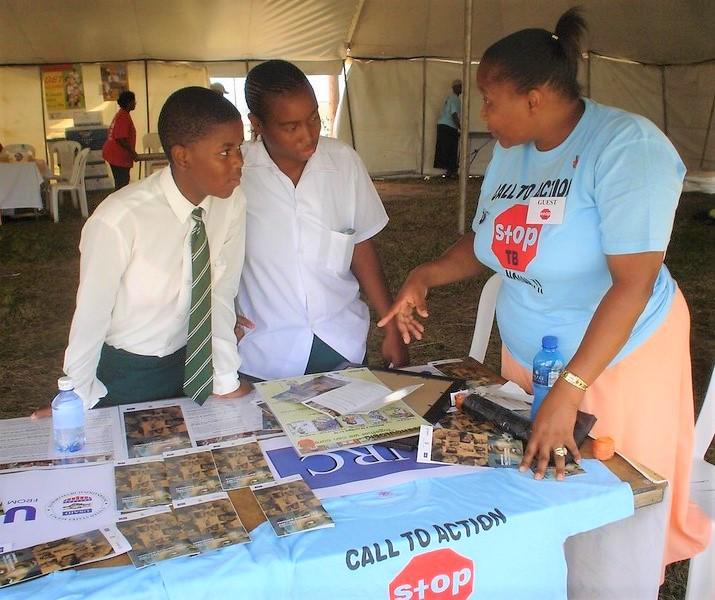A shorter treatment regimen may be possible for children with non-severe tuberculosis (TB), according to the results of a randomized trial published yesterday in the New England Journal of Medicine.
The trial, which involved more than 1,200 children from countries with high TB burdens, found that 4 months of antituberculosis treatment was non-inferior to the standard 6-month treatment, with few adverse events and lower costs.
Most of the estimated 1.2 million Children who develop TB each year have less severe forms of the disease, according to the World Health Organization (WHO), but they historically have been excluded from clinical trials for TB treatment and receive the same treatment regimen as adults—a regimen that involves several antibiotics, some of them with toxic side effects.
These findings suggest that children with non-severe TB may have an alternative to the one-size-fits-all strategy of treatment.
Data show 4 months non-inferior to 6
For the SHINE trial (Shorter Treatment for Minimal Tuberculosis in Children), a team led by investigators with University College London recruited children under 16 with non-severe, symptomatic, presumably drug-susceptible, smear-negative TB from Uganda, Zambia, South Africa, and India.
Participants were randomly assigned 1:1 to receive either 4 months or 6 months of treatment, with all participants receiving 8 weeks of standard therapy with isoniazid, rifampin, and pyrazinamide, followed by 8 weeks of isoniazid and rifampin in the 4-month group and 16 weeks in the 6-month group.
The primary efficacy outcome of the trial was unfavorable status (defined as treatment failure, loss to follow-up during treatment, or death) by 72 weeks, with a non-inferiority margin of 6 percentage points. The primary safety outcome was an adverse event of grade 3 or higher during treatment and up to 30 days after. The investigators also conducted an economic analysis.
Of 1,461 children who were screened for the trial, 1,204 underwent randomization from July 2016 through July 2018, with 602 each in the 4-month and 6-month group. The median age of participants was 3.5 years, 52% were boys, 88% were African, 11% had HIV infection, and 14% had bacteriologically confirmed TB. Retention by 72 weeks was 95%, and adherence to treatment was 94%.
In the primary modified intention-to-treat analysis, unfavorable status was observed in 16 of 572 children (3%) in the 4-month group and 18 of 573 children (3%) in the 6-month group. The adjusted difference (–0.4 percentage points; 95% confidence interval [CI], –2.2 to 1.5) was within the non-inferiority margin.
Non-inferiority of the 4-month treatment was consistent in the intention-to-treat and per-protocol analysis, as well as in a secondary analysis of 958 children independently adjudicated to have TB at baseline.
A total of 115 adverse events of grade 3 or higher occurred during treatment or up to 30 days after in 95 children, with 49 events occurring in 47 children in the 4-month group and 66 events occurring in 48 children in the 6-month group. Most of those events occurred during the first 8 weeks of treatment, when both groups were receiving the same treatment.
A cost-effectiveness analysis showed that, at 72 weeks, children treated for 4 months had similar health outcomes as those treated for 6 months, but with lower healthcare costs.
Making treatment easier for kids
The investigators say the results suggest that the wider goal of shortening treatment for TB patients—an effort being pursued for both drug-resistant and drug-susceptible forms of the disease—can now be applied to children as well as adults, and will not require new drugs.
"Our results show that a new regimen with new drugs is not necessary for the shortening of treatment in the majority of children with drug-susceptible tuberculosis, since such treatment shortening can be accomplished with the affordable, child-friendly, fixed-dose combinations that are already available," they wrote.
In an accompanying editorial, TB experts from McGill University in Canada and the University of Cape Town in South Africa say the findings are important because the standard 6-month regimen, pill burden, and medication side effects present big challenges for treating children with TB in the low- and middle-income countries where it is most prevalent. They say the next steps to implementing the shorter regimen should be the revision of global TB treatment guidelines by the WHO and adoption by national TB programs.
"Although the findings of this trial are applicable only to nonsevere tuberculosis, most cases of tuberculosis in children initially manifest as nonsevere disease, with low bacillary burden on smears and molecular tests," they wrote. "Thus, the trial findings will be applicable to most children with tuberculosis and can be adopted by national programs with the use of fixed-drug formulations that are already available."

























